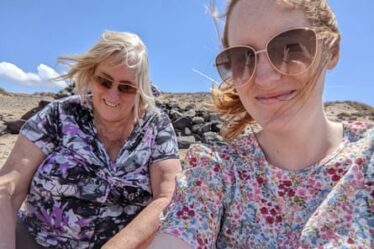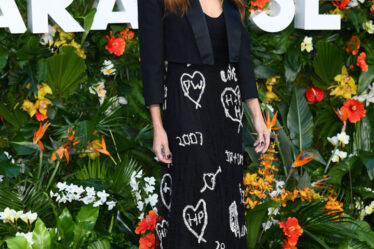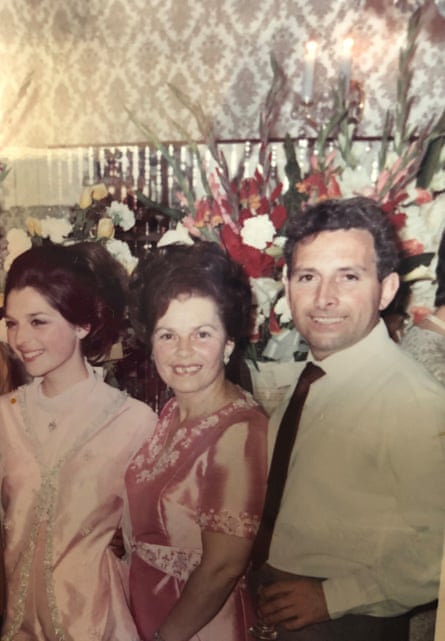
Last year I had something custom made by a local tailor. I was overcome by nostalgia as she took my measurements, moving around my body with her tape measure. During childhood my mum made my ballet costumes, and my first communion in primary school was preceded by a visit to a dressmaker. But as I stood in the tailor’s studio I realised it had been decades since someone had taken my measurements, to make something just for me.
That commercial dressmaking has faded, particularly in Anglophone cultures, is a reflection of how dramatically our relationship to clothes has changed. Decades of ever faster fashion and outsourced production has left us buying, then disposing of, twice as many clothes as we did in the year 2000. The idea of getting a garment made, having it altered over years, then passing it down seems practically antiquarian. But not so long ago it was commonplace. This week four people share stories of dressmaking across generations, and the garments and traditions they’ve inherited.
‘It was actually a lot more affordable’
Madeleine Park, fashion stylist and host of Style Stories podcast, is a third-generation Australian. “My family’s Greek,” she says. “A lot of migrants have small businesses or do trades. Our family had this lady, Thespina, who was a dressmaker.”
“She made lots of things for my mum and my grandmother. She made my mom’s engagement outfit, which is beautiful. It was this raw silk pink vest with matching flares and a shirt.”
When she was a teenager, Park started getting her own garments made by Thespina. “Finding dresses as a petite 16-year-old girl wasn’t easy and it was also incredibly expensive,” she says. “In the mid to late 90s, it was actually a lot more affordable to go to her.”
Thespina didn’t speak much English so Park would show her images or sketches, and Park’s mother would interpret as needed.
When Park needed a dress for her uncle’s wedding, she found one she liked in a boutique and used it as inspiration to take to Thespina. “It was a straight dress, and it had an asymmetrical line with a beaded spaghetti strap,” she says. “I think the original dress was baby pink with apple green. But the fabric we found was a cream with a yellow embroidered floral on top.”

“I loved fashion so much, even back then, I would pour over the magazines,” she says. It was special, “to enter that world just in my private little Greek community”.
‘Our outfits had Indian silhouettes, but with Chinese imagery’
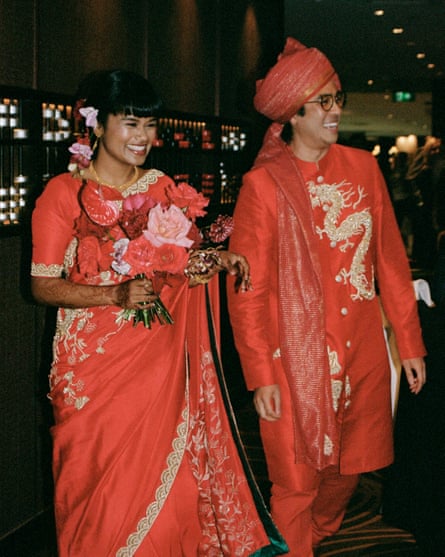
When lawyer and screenwriter Humyara Mahbub and comedian Michael Hing were planning their wedding outfits they realised they could highlight and celebrate the similarities across their cultures if they had their garments custom made.
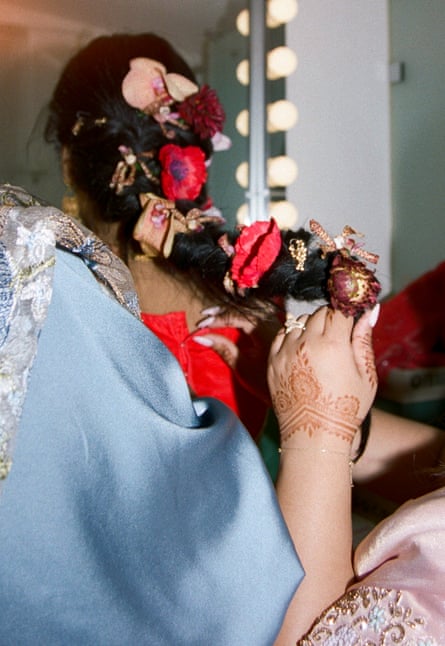
“We had a vague idea of what we wanted, which was to merge traditions,” says Mahbub, who is Bengali. “The Indian and Chinese outfits for boys are actually basically the same – a long tunic and pants. So both our outfits had Indian silhouettes, but with Chinese imagery.” They chose red and gold because these colours also shared significance.
Mahbub says it’s common for wedding parties to visit India to get custom-made dresses and other garments, because the industry there is still thriving. But with no time to travel, she and Hing turned to By Elora, a designer in Redfern, Sydney, who specialises in fusion intercultural wedding outfits.
“It’s super cool,” Mahbub says. “Especially in a country like Australia where there are a lot of cross-cultural and interracial marriages happening all the time.
“If you had a white wedding or a full Indian wedding, someone’s heritage is kind of getting minimised on the day.”
By Elora work with makers in Bangladesh and India, who have the ancestral skills to do traditional south Asian embroidery called Zardozi. “I’m pretty sure 30 people worked on our outfit for three months,” Mahbub says. They also had outfits made for the rest of the wedding party.
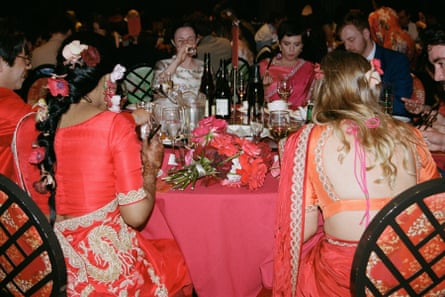
“I actually … wish we did it more commonly,” Mahbub says. “I like that in Bangladesh, this is just how your clothes get made. I think it’s kind of annoying in Australia, you have to just buy off the rack.”
‘I’ve still got Gran’s sewing machine’
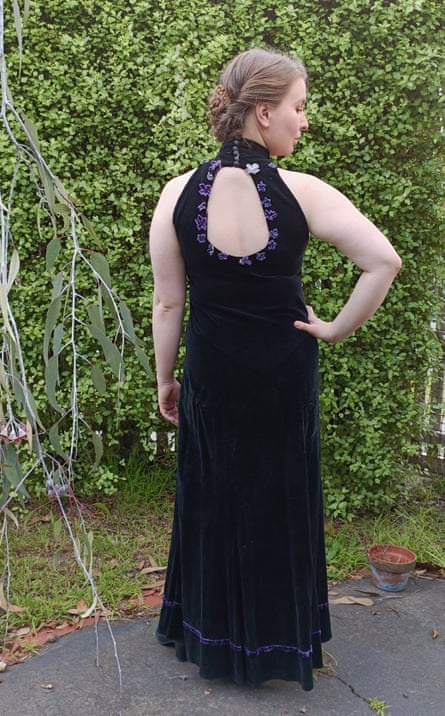
In 1996, when Kate Strikker was 18, she was looking for something to wear to a 1920s-themed formal dinner. Her mum pulled a floor-length dress out of her wardrobe and asked if she could make it work. It was made from black velvet, embroidered with little violets, and had a high neck and a keyhole back.
The dress belonged to Strikker’s grandmother, who was born in New Zealand in 1914. She made it herself sometime in the 1930s. “My gran died when I was one, so I never knew her,” Strikker says.
When she was eight, Strikker inherited her grandmother’s sewing machine and learnt to sew on it. “I feel a really big connection to her through sewing.”
These skills came in handy as she and her mother restored the dress. “I remember repairing the armhole by stitching and binding around the bottom of it to fix it up,” she says. “I sewed on new buttons at the back of the neck. I even made new thread button loops.”
Strikker, who now runs a yarn shop where she also teaches knitting and crochet, ended up wearing the dress to three parties.
‘I always thought it might be nice to wear her wedding dress’
Stephanie Jay and her sister used to play dress-ups in their grandmother’s wedding dress. “She got married in December 1943, so her dress was in a box in storage for a long time,” she says. “We got it out occasionally. I’ve got photos of us as 12-year-olds wearing it.”
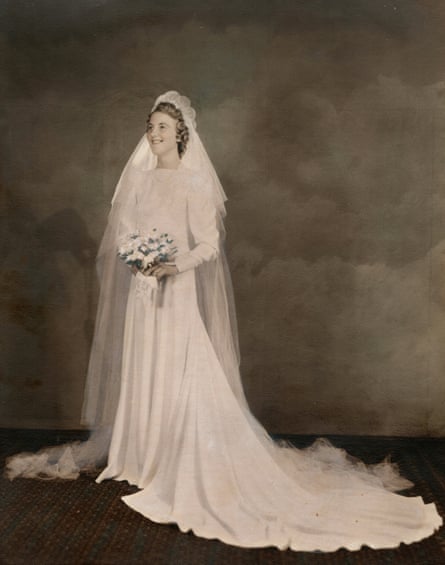
When Jay was shopping for her own wedding almost 40 years later, she realised the gowns she liked most were similar to her grandmother’s wedding dress. “I didn’t really have a fair idea of what style I wanted, but I had always thought it might be nice to wear her dress,” she says.
The dress was a little big for her, so she put a call out on social media for a dressmaker in Melbourne who specialised in alterations. Working together, she and a dressmaker, Heather, made several adjustments to the dress including taking it in, removing the sleeves, widening the neckline and adding a button to shorten the train. The extra fabric from the sleeves was used to cover a few marks on the fabric.
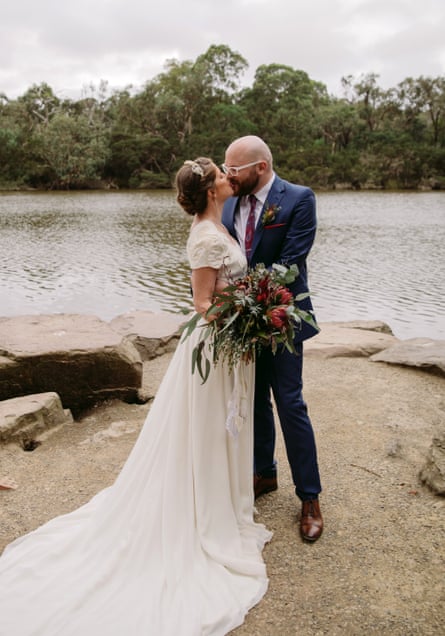
Jay wanted to accentuate the dress’ original applique and stitching details. “You could see it when you got up close but I really wanted to highlight it and make it kind of stand out,” she says. “I got the dressmaker to cut the neckline around the shape of the applique, and she added bead work to border it so it really … popped in the photos.”
“Unfortunately, my granny is no longer with us,” she says. “She was my dad’s mum and he was pretty chuffed that I wore her dress.”


